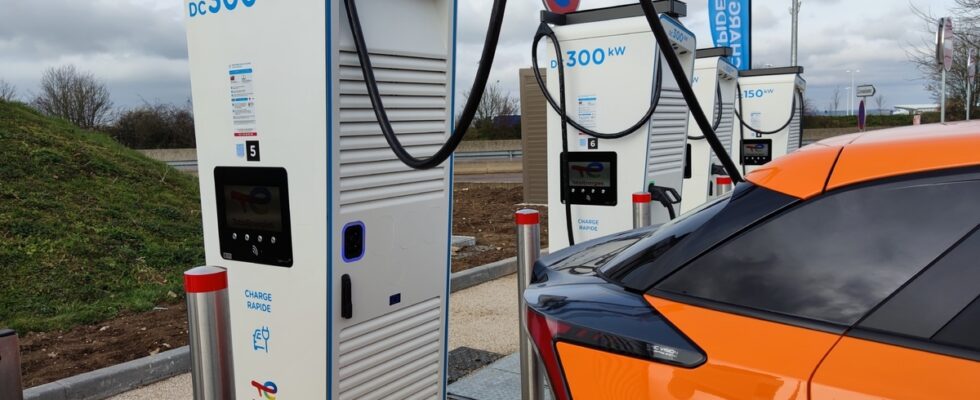The UFC-Que Choisir association tackles the thorny subject of the autonomy of electric cars in a study published on Monday March 13, 2023, entitled Unkept promises. The opportunity to show once again that car manufacturers seek to deceive consumers.
But since the Dieselgate affair, their good faith has largely been shaken. This scandal, which shook the automotive industry in 2015 after the discovery of fraudulent software, proved that certain manufacturers, Volkswagen in particular, sought to minimize real CO2 emissions in the context of homologation tests by activating certain emission control systems only under these conditions. A cheat which was not without consequence insofar as 11 million cars were sold with such software, while their NOx emissions, for example, were up to 40 times higher in real conditions than during tests. of approval.
Since then, the sale of diesel vehicles has plummeted and the rapidly changing market is moving towards electrification of the fleet, with in particular an all-electric market share of around 13%.
© David Lefevre / Digital
Real differences
Knowing that the range of electric vehicles remains “at the heart of the concerns of electric motorists”this one being “one of the main criteria for choosing an electric car”, the association notes the differences noted between the autonomy announced by the manufacturers and those in real situation of about twenty vehicles. Thus, deviations of up to 33.4% (VW ID.4 GTX) are noted. Among the other major differences, UFC-Que Choisir notes, for example, a differential of 27.2% for the Citroën ë-C4 136 hp (262 km against 360 km), 26.8% for the Tesla Model Y Grande Autonomie ( 371 km against 507 km), 22.4% for the Peugeot e-208 (264 km against 340 km) or 19.6% for the Dacia Spring (185 km against 230 km).
However, certain reservations can be made regarding the figures announced. Without calling into question the seriousness of the study by our colleagues, we note that there are no details on how the autonomy noted by the association is noted. On Digitalwe remind you that we systematically notice significant differences between the autonomy announced and the autonomy measured.
To measure fuel consumption in town, we systematically follow the same route for 15 km at off-peak hours. On the road, our measurements are taken on the same country roads limited to 90 km/h. On highways, we do the same 150 km loop. But the differences that we note between our protocol and the measures announced are mainly attributable to the WLTP certification cycles.
© David Lefevre / Digital
A WLTP certification cycle disconnected from reality
This standard, imposed since September 2018 and which replaces the even more outdated NEDC homologation cycle, is a procedure intended to evaluate the consumption, autonomy and CO2 emissions of vehicles according to a series of tests supposed to reproduce driving conditions. real.
That said, this series of tests is carried out on a chassis dynamometer for 30 minutes and the equivalent of 23.25 km. The test includes 52% urban travel and 48% extra-urban (motorways), the maximum speed being 131 km/h, the average speed 46.5 km/h and the temperature between 14 and 23°C. The mixed cycle communicated by the manufacturers corresponds to the average of the urban and extra-urban circuit and promotes sobriety. This cycle remains very difficult to reproduce in real road conditions.
© David Lefevre / Digital
Similarly, the UFC-Que Choisir study points to the “misleading” charging powers highlighted by manufacturers. Let’s take the Megane E-Tech as an example (we have no information on the model), whose power increases to “only” 121 kW, battery empty, then decreases as it is filled (55 kW after 30 min) . On our side, we also notice differences in power most of the time, but this decrease is normal insofar as the filling of a lithium-ion battery is similar to that of a bottle of water. When the container is empty, the flow rate can be high, then it must be reduced as it fills, in particular to avoid the phenomenon of overheating of the cells (due in particular to the appearance of dendrites).
Indeed, the more the battery fills, the less the energy distilled by the charging terminal is distributed between the cells. In addition, a multitude of factors must be taken into account, such as the temperature setting of the battery, the power of the terminal, the simultaneous charge, the battery management system or the outside temperature. So many conditions to meet to benefit from optimal charging, but which new converts do not necessarily have in mind when they buy an electric vehicle. These new drivers do indeed need to change their thermal habits, and car manufacturers, who seek to sell as many electric cars as possible, do not necessarily help them. UFC-Que Choisir is right to call them to order, but the exercise deserved to be as clear as possible on the methodology.

